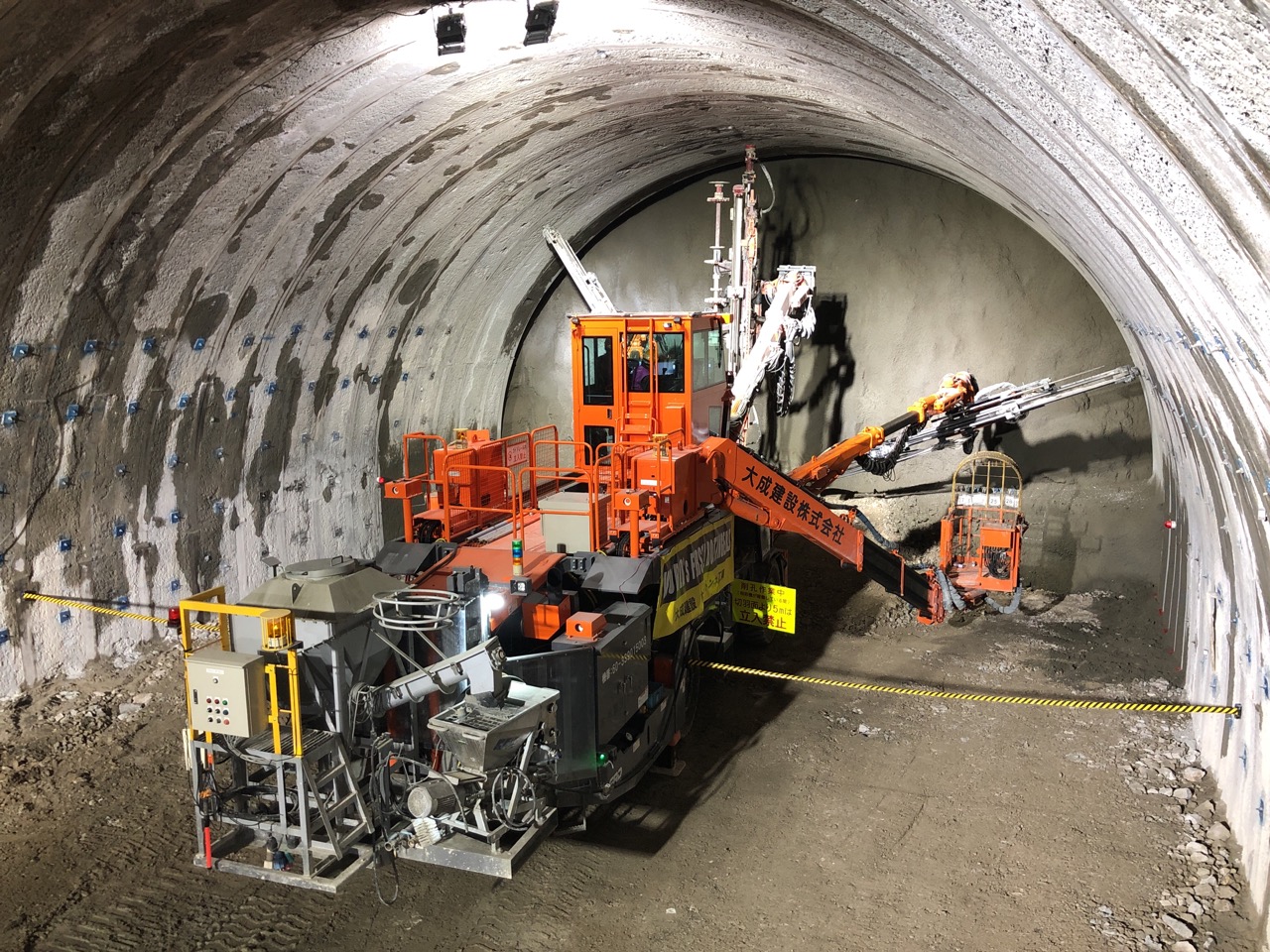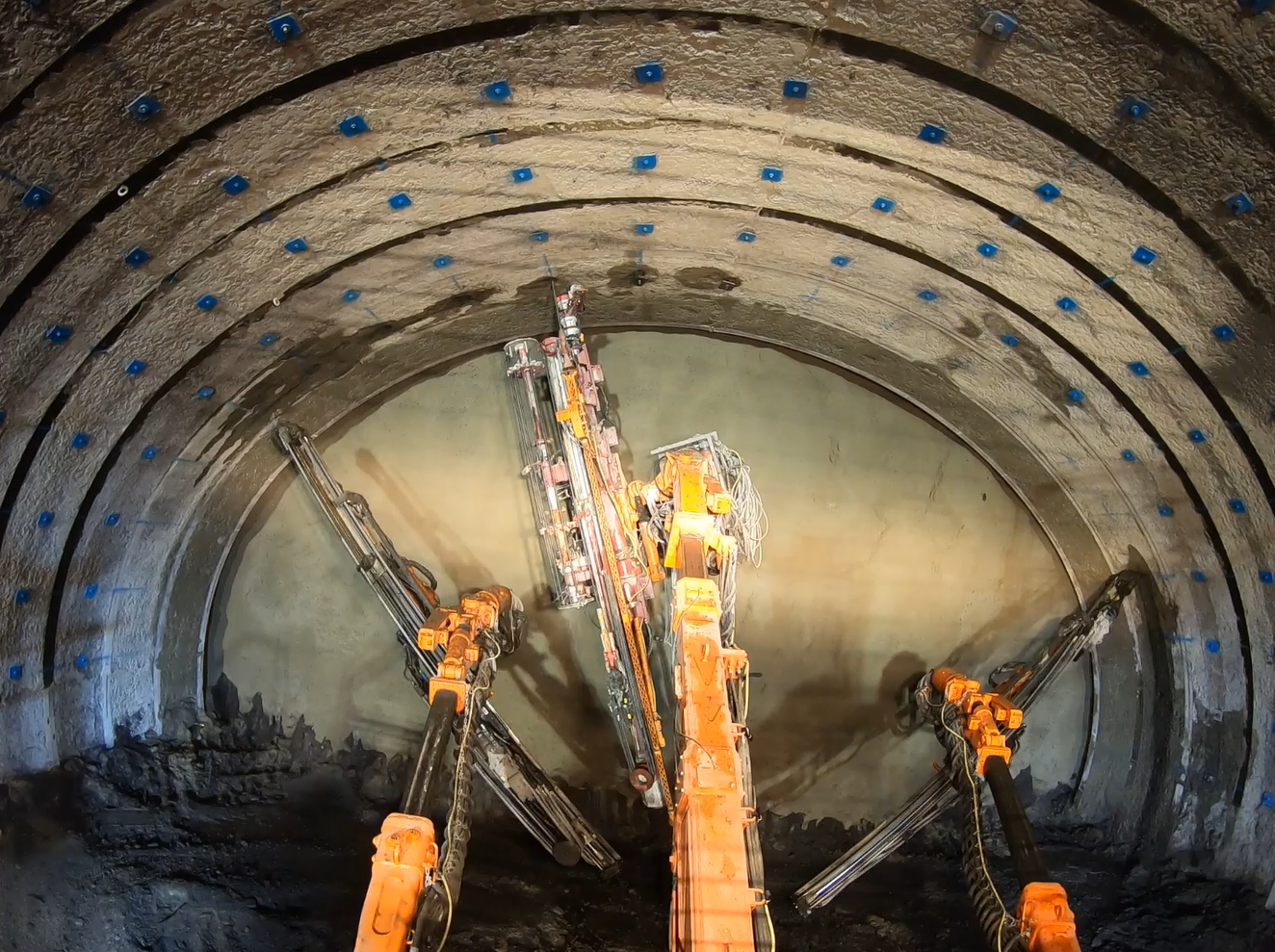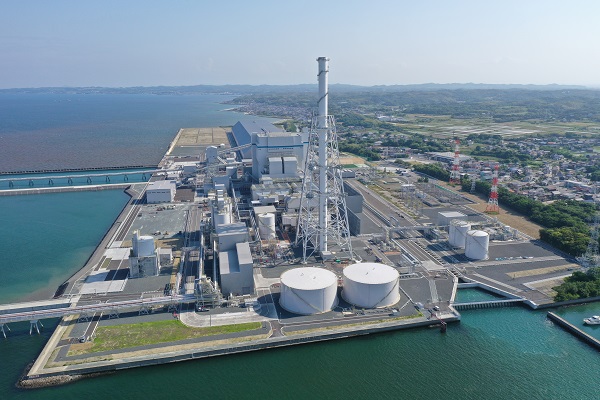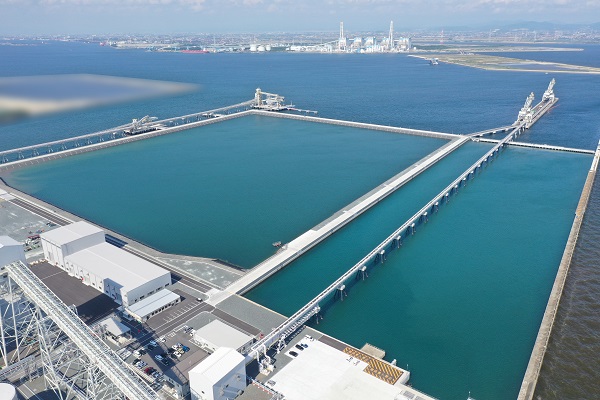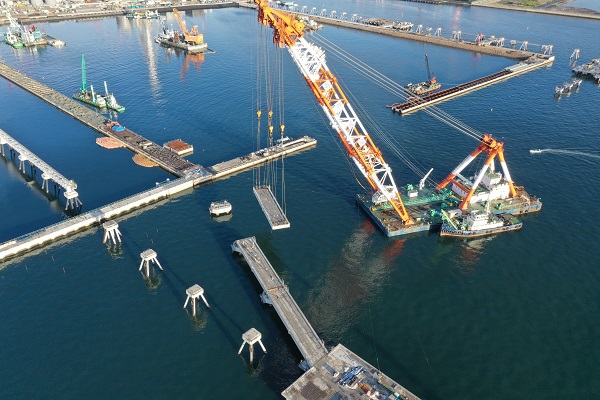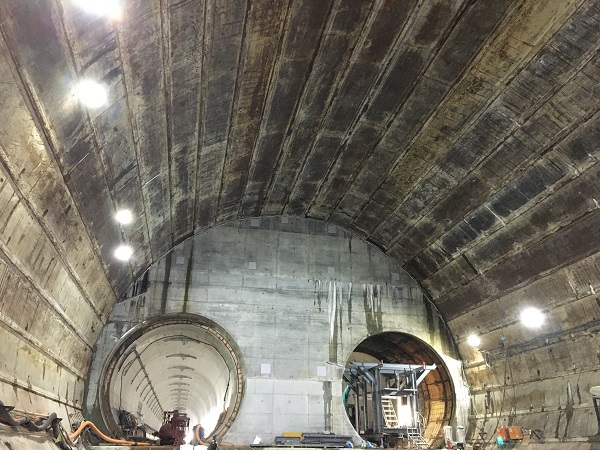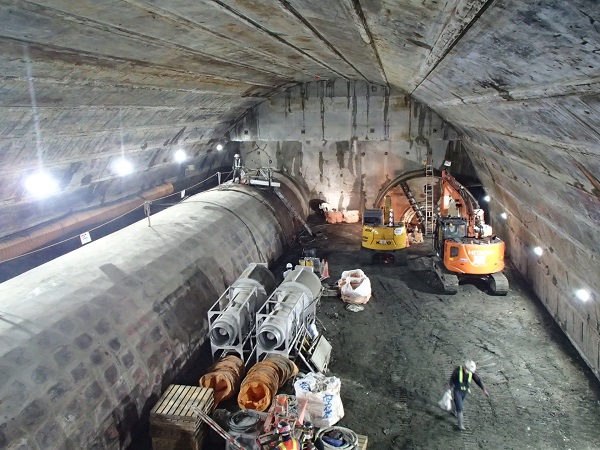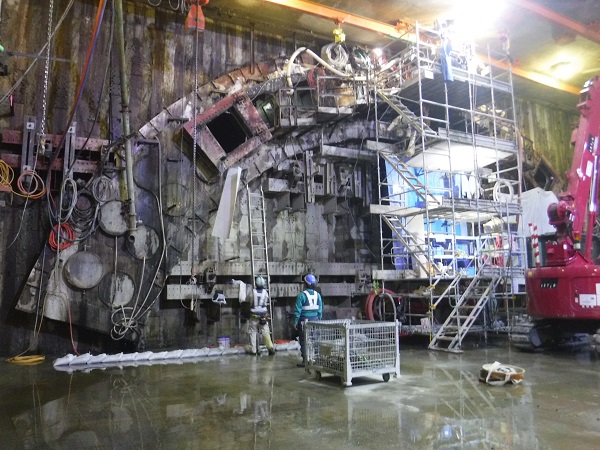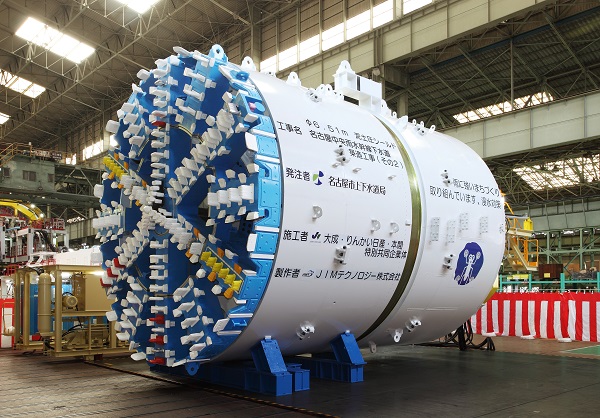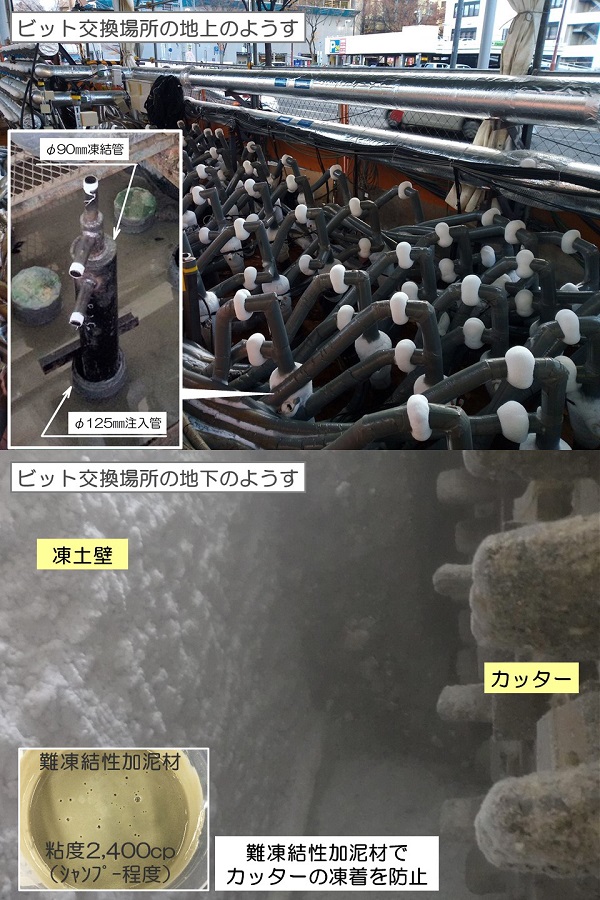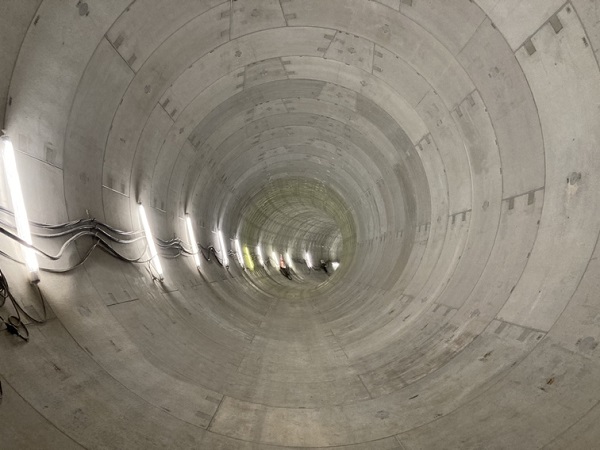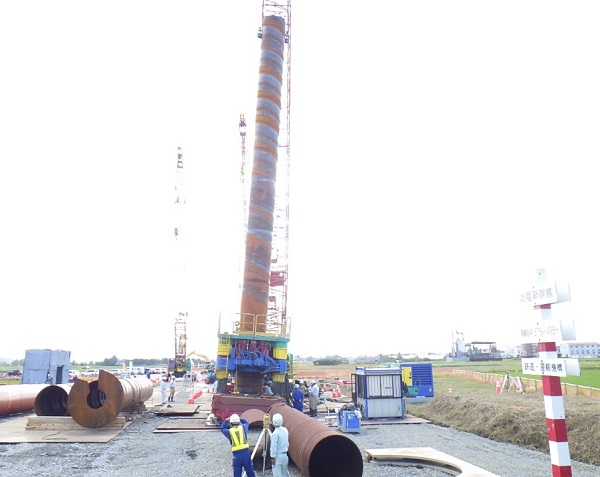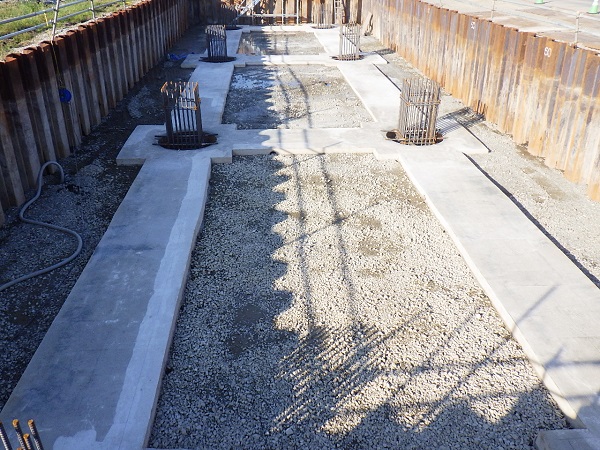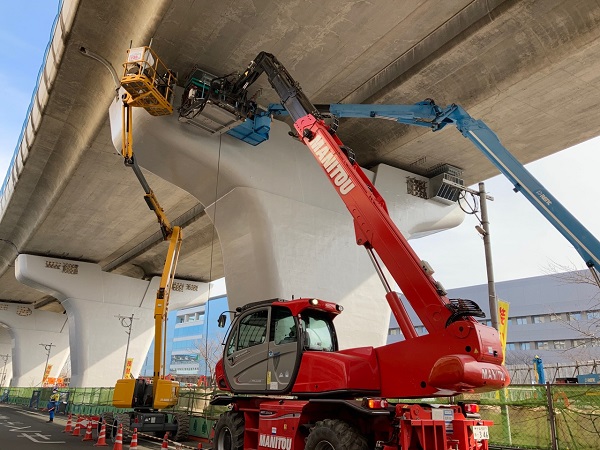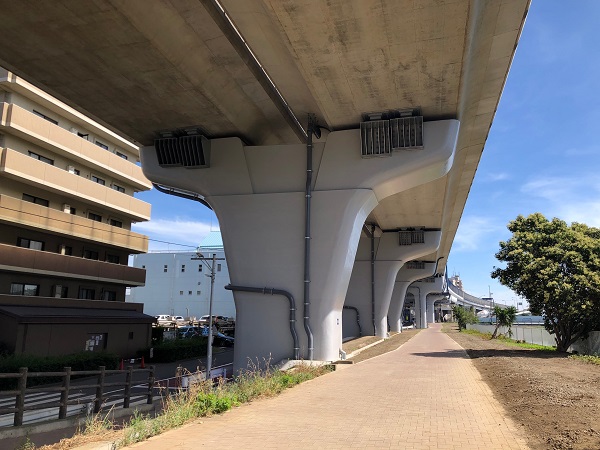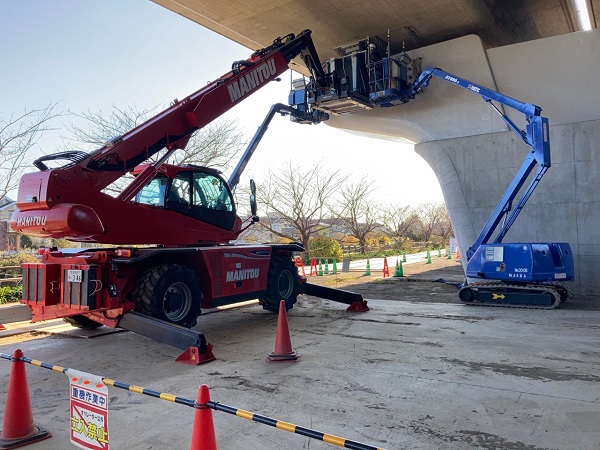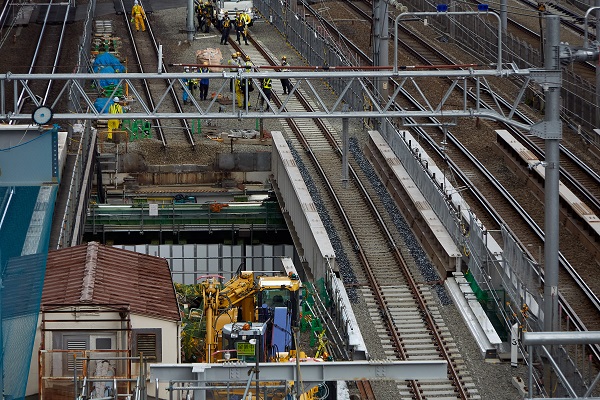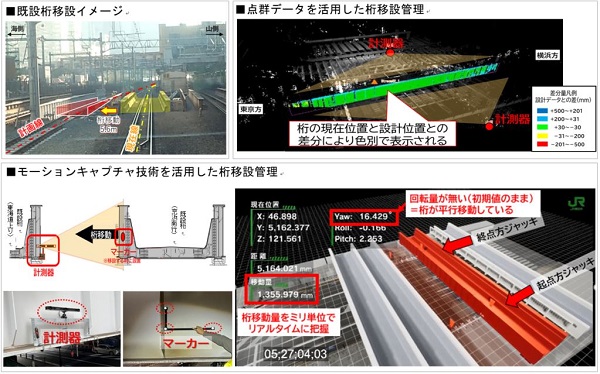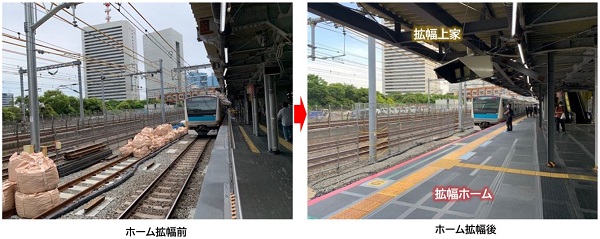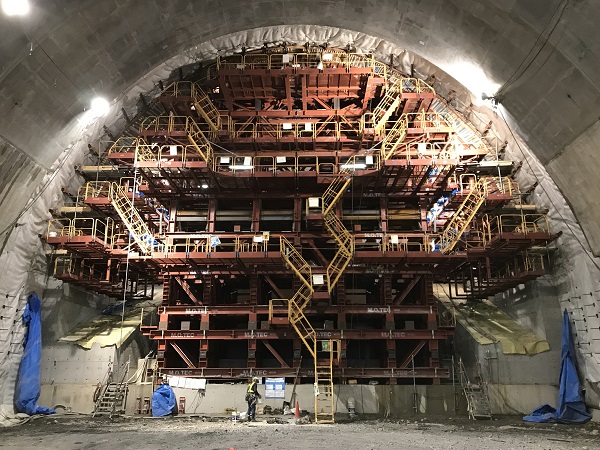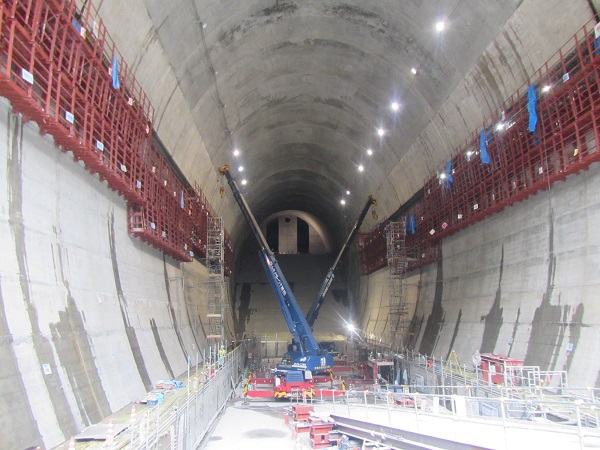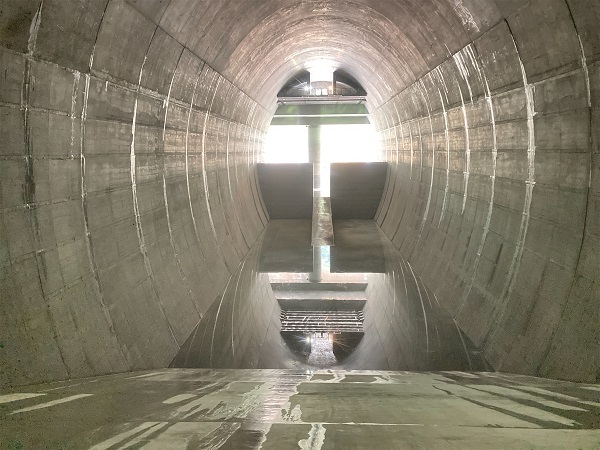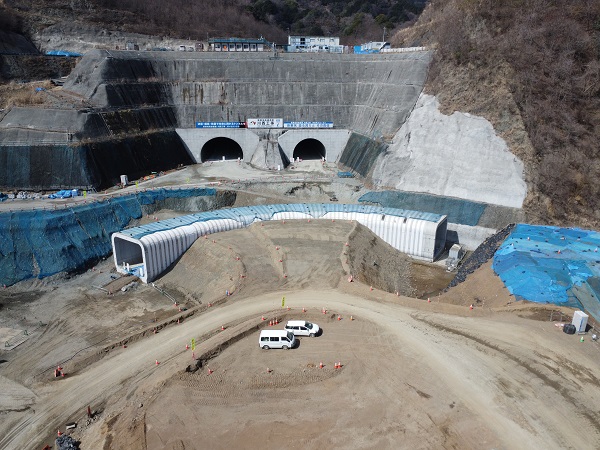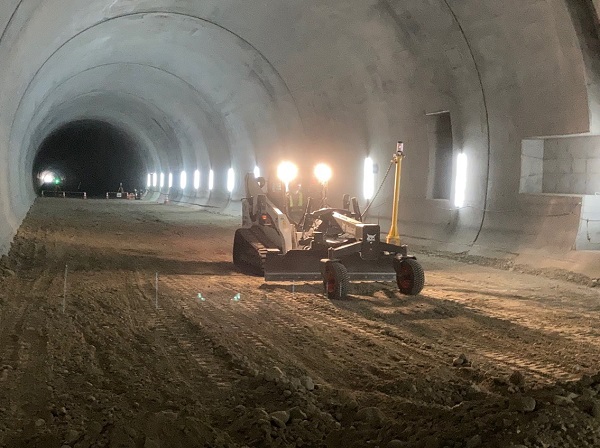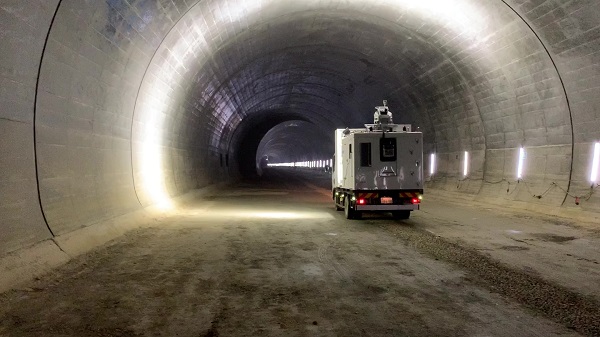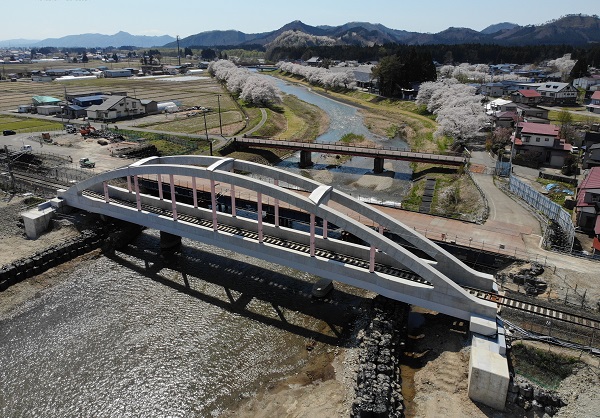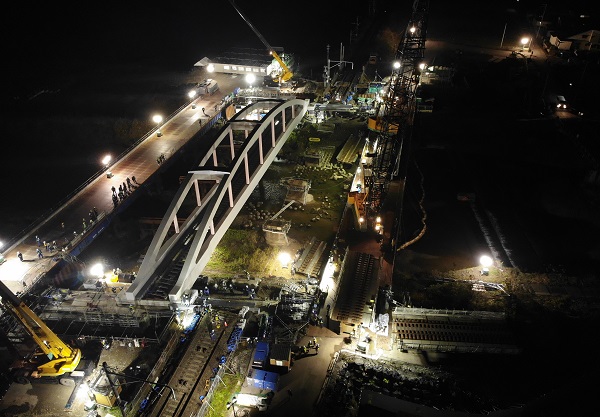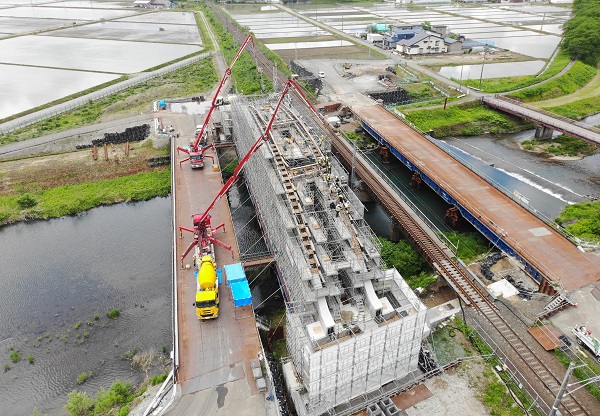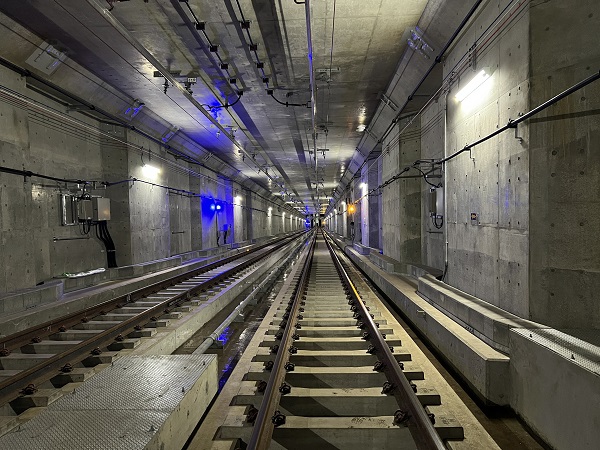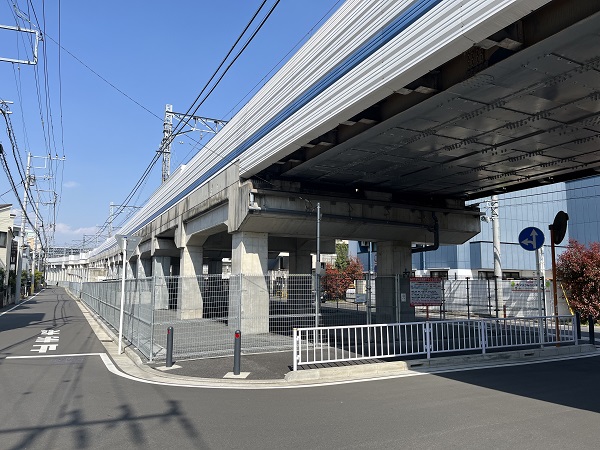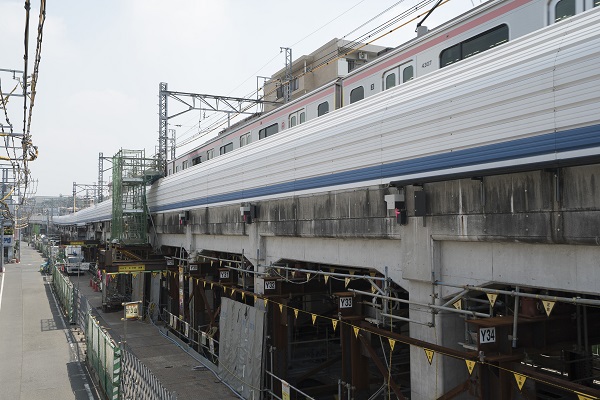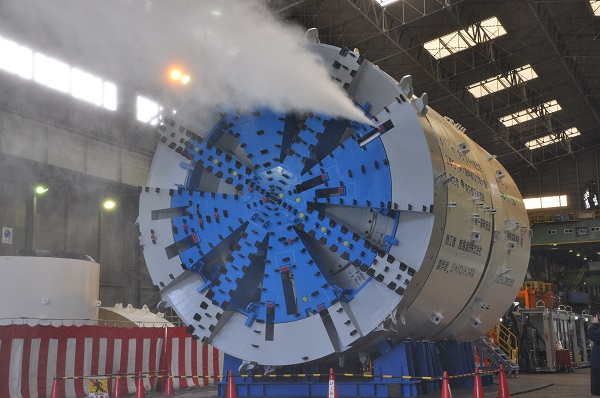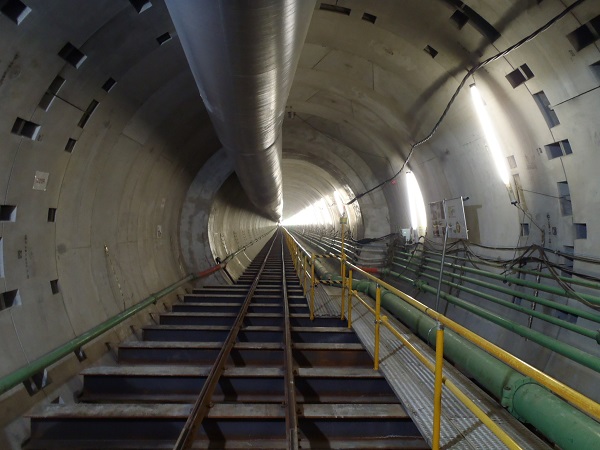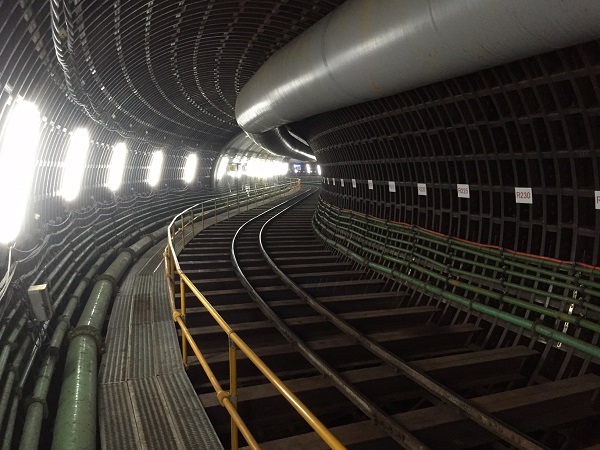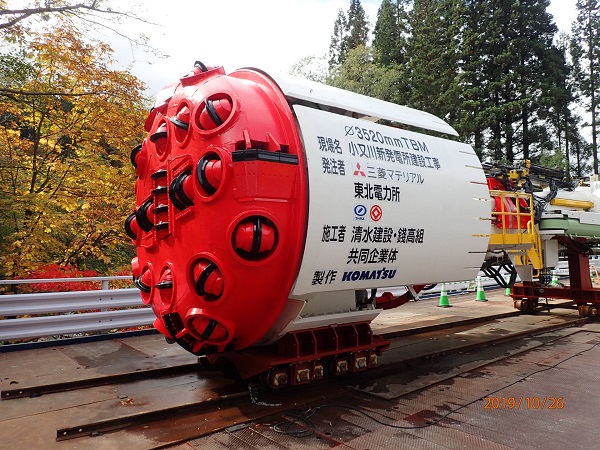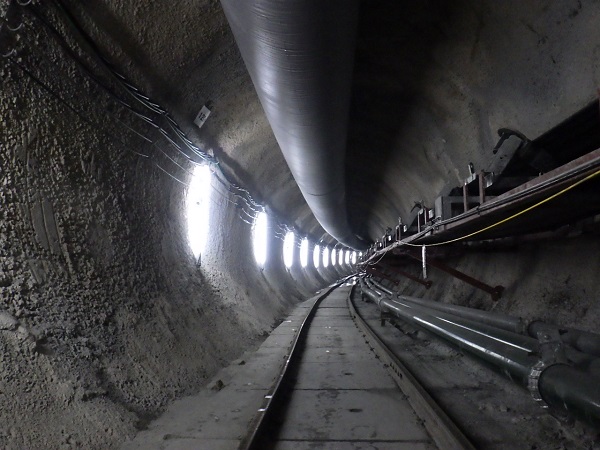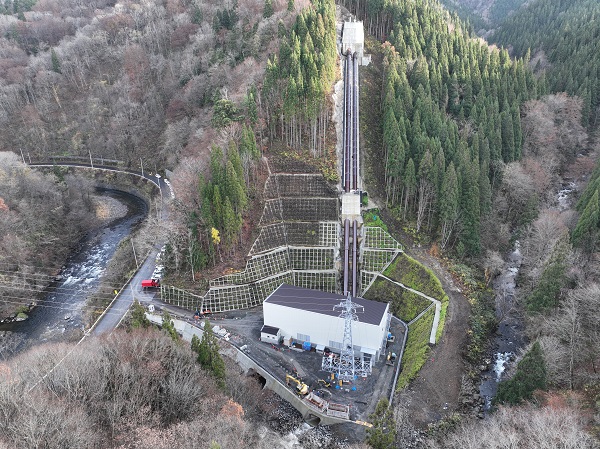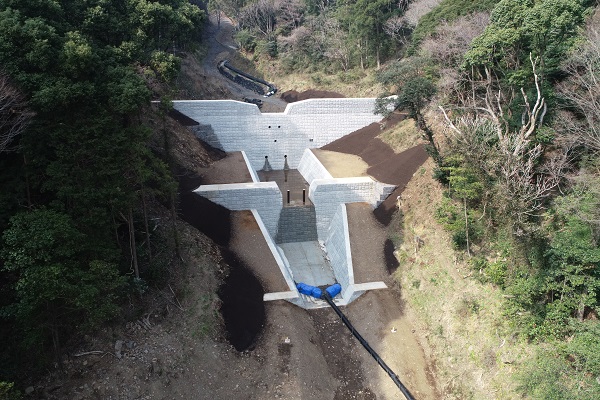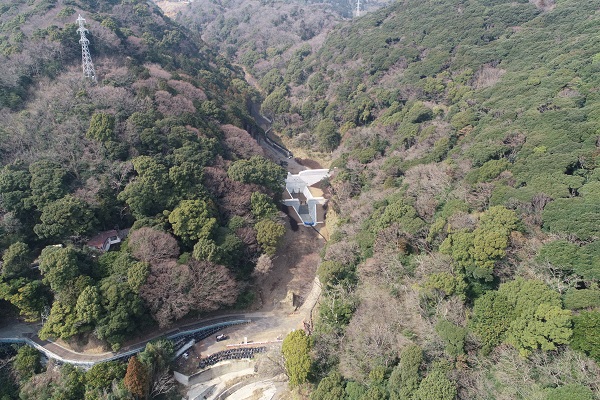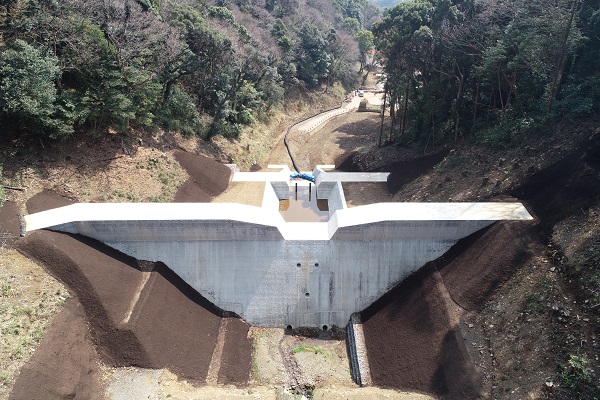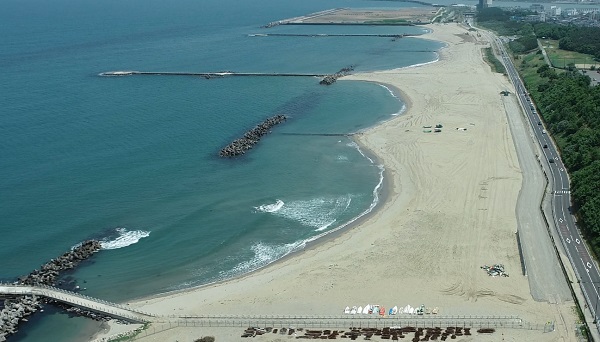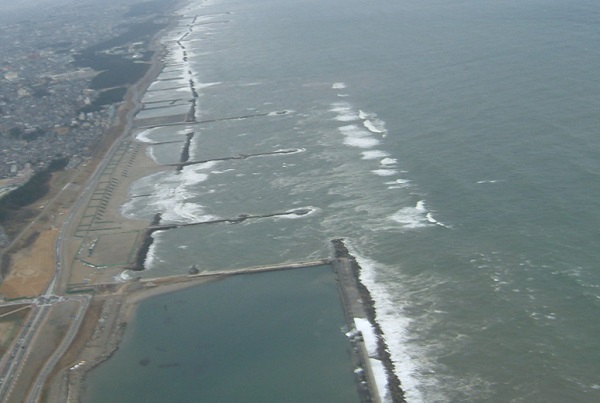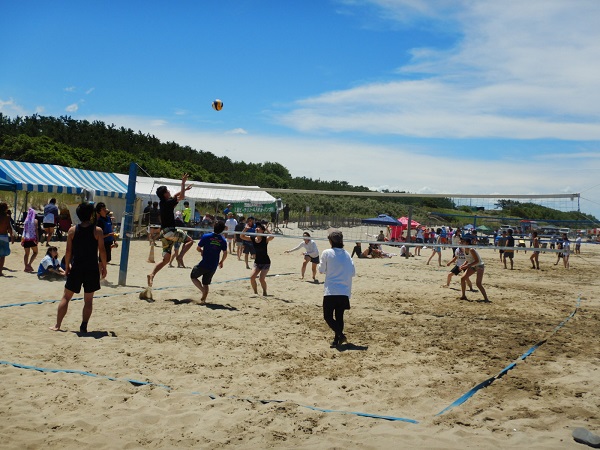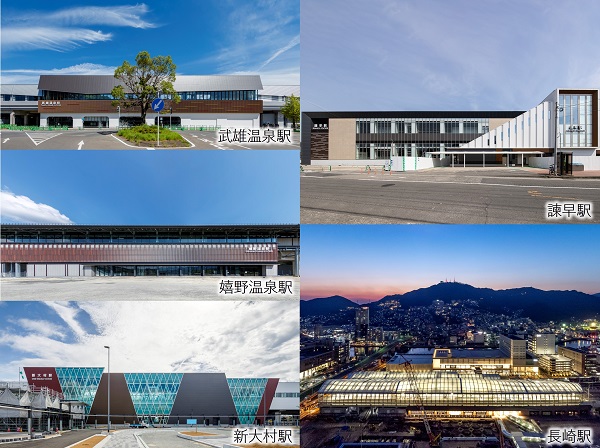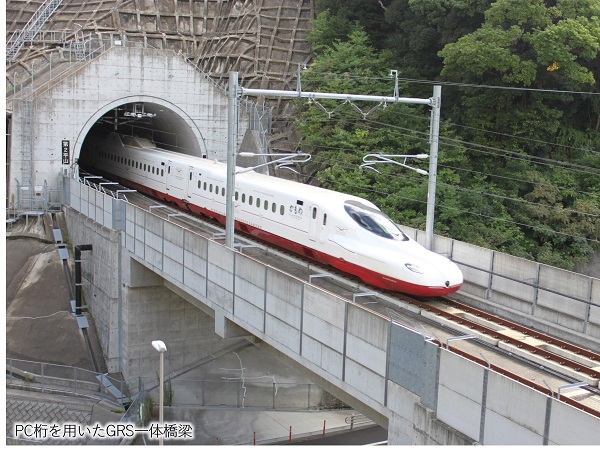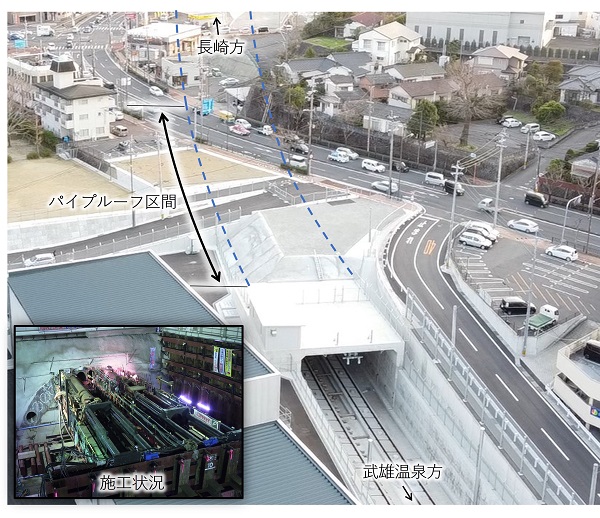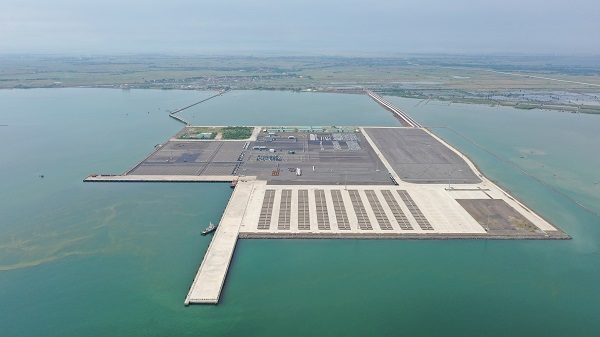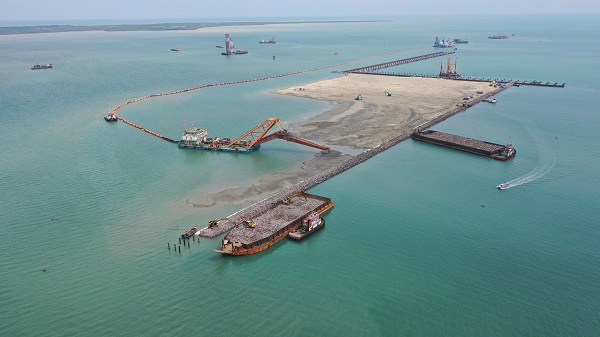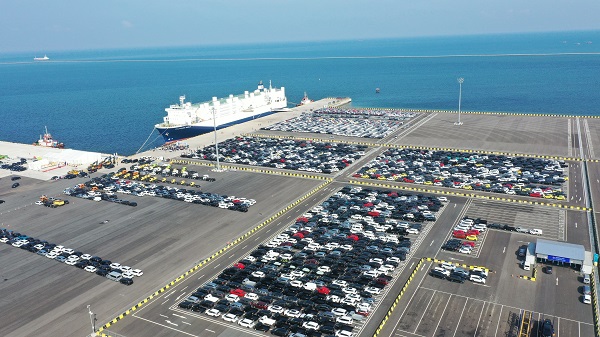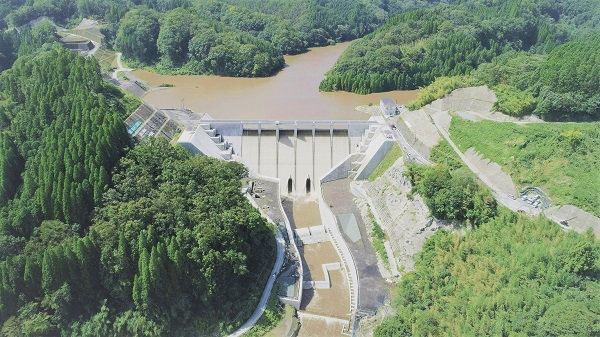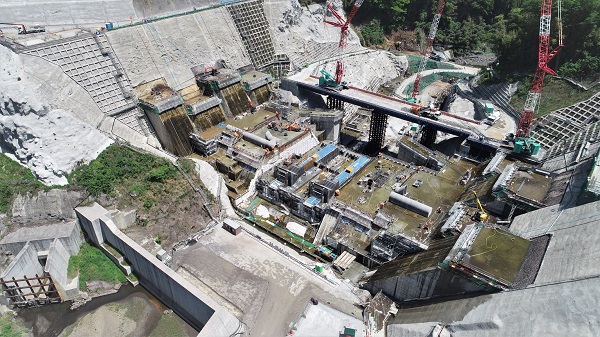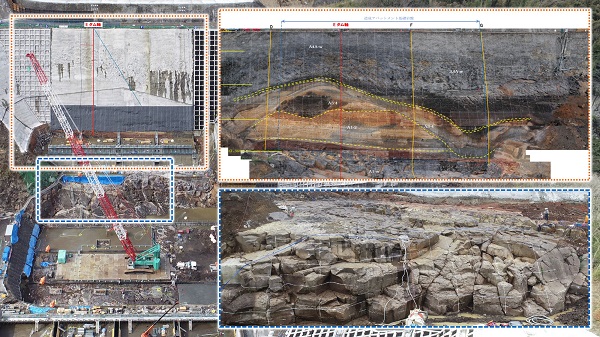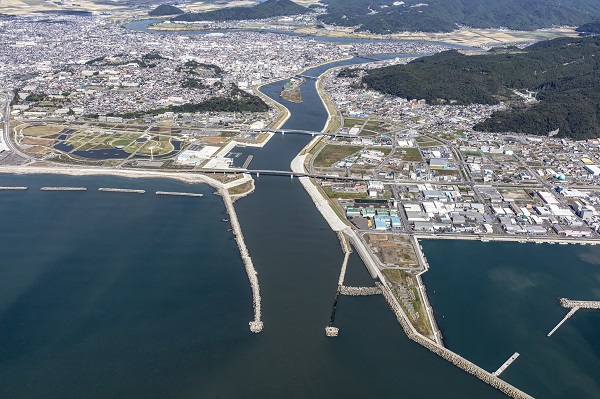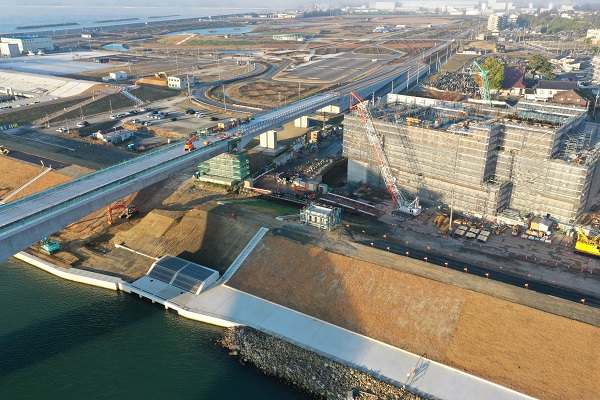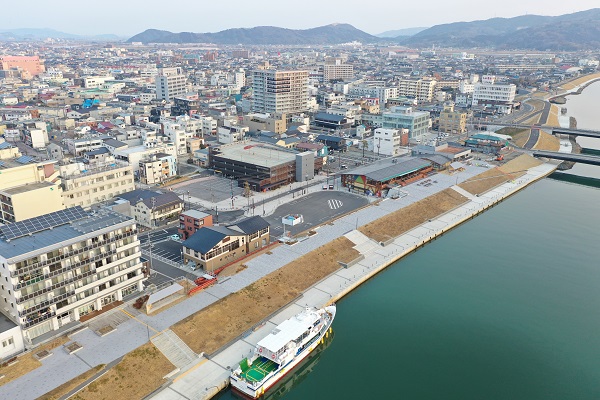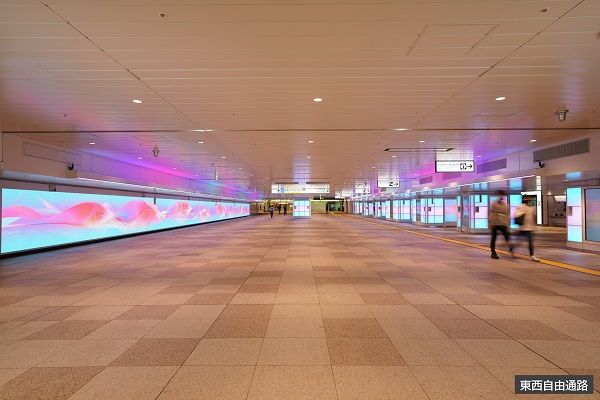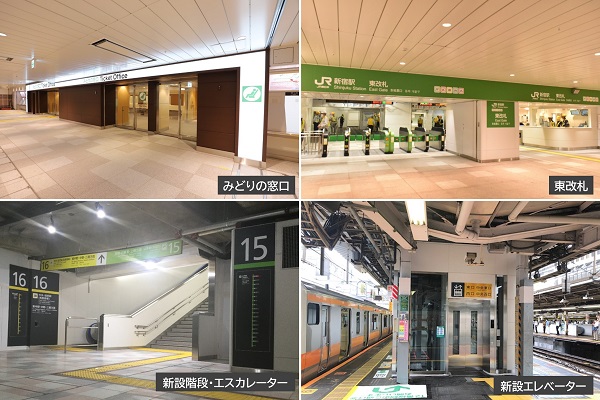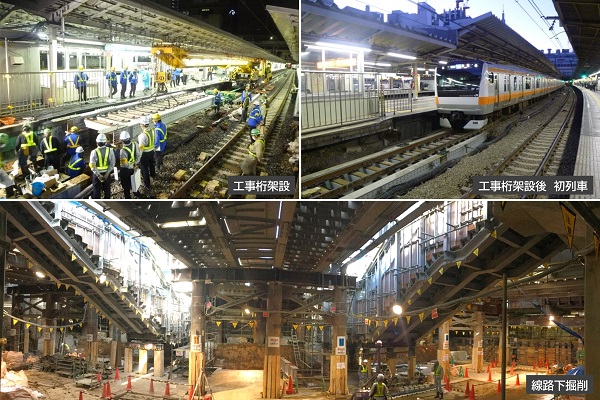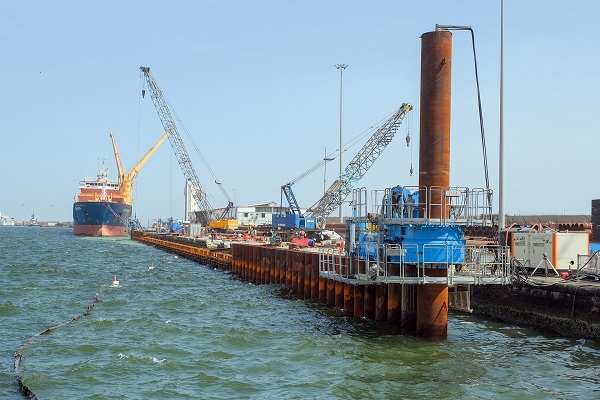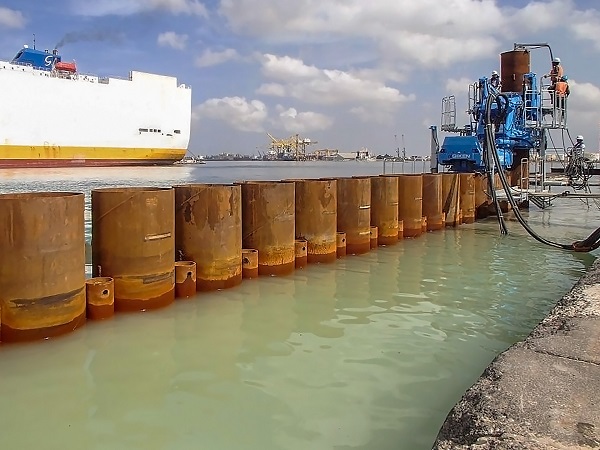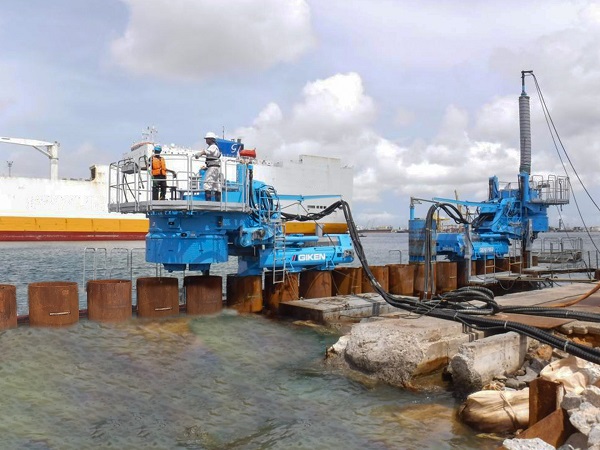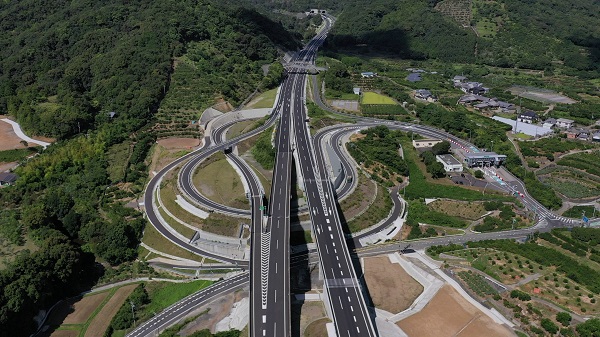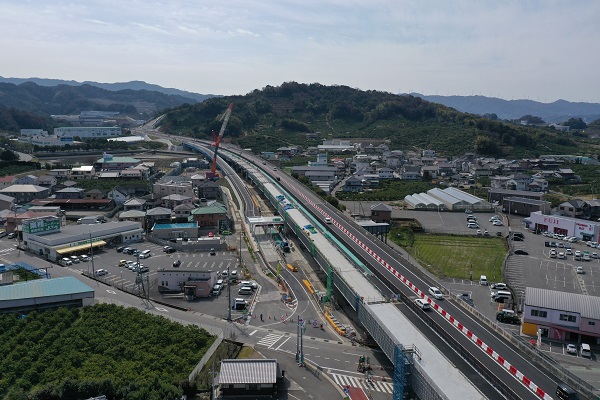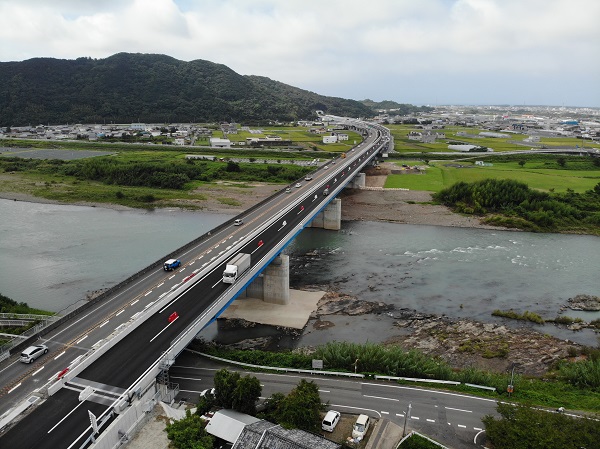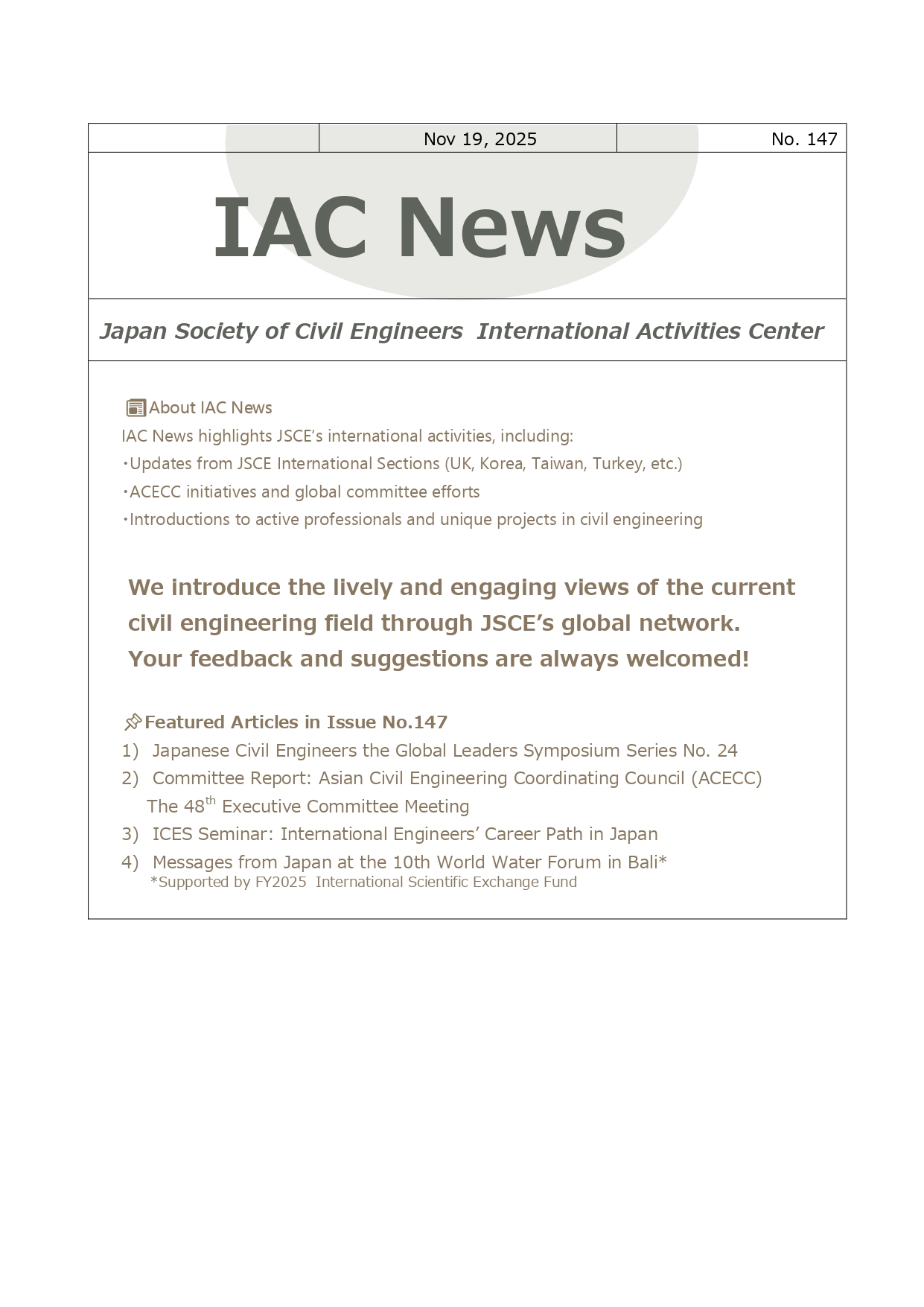2022 Outstanding Civil Engineering Achievement Award
[Group-1]
1. Safety and productivity enhancement in tunneling project with rock-bolting machine “BOLTINGER”
- Chugoku Regional Development Bureau, San-in West National Highway Office
- Taisei Corp. Chugoku Branch
The Kiyo No.3 Tunnel is a road tunnel with 410 m length. The geological surveys in design phase indicated that the tunnel would wholly encounter poor rock conditions. Therefore the support system classified in “D” using 6 m of rockbolts was designed for all excavating length.
Manual installation of such long and heavy rockbolts would possibly arise problems regarding safety, working-environment, and productivity.
This project applied a newly developed rock-boliting machine named “BOLTINGER” so that 6 m of rockbolts could be mechanically constructed by jointing two parts with 3 m length.
The development and application contributed to not only mechanization for tunneling but also civil engineering development in creating new construction method. For this reason, it was honored with Technology Award.
2. Large-scale precast construction of civil engineering structures that contributed to the early operation of thermal power plants)
- JERA Power TAKETOYO LLC.
- JERA o.,Inc.
- TAISEI CORPORATION
In the replacement work of the Taketoyo Thermal Power Plant, a high-efficiency power generation facility of 1.07 million kW class was newly constructed that incorporates co-firing of woody biomass fuel into coal. The civil engineering work consists of offshore work such as coal unloading piers and onshore work such as water intake and discharge facilities. We achieved the Pca-based construction of raking pile structures for coal unloading piers and marine conveyor foundations, and the construction method of Japan's first water discharge passage using PC wall-pile as the main body. This achievement was highly evaluated as a technology that can contribute to improving productivity in future similar construction and was recognized as worthy of the Technical Award.
3. Construction of a large-section tunnel at a railroad station using the rectangular element jacking method (Tsunashima Tunnel, Sotetsu-Tokyu link line)
- Japan Railway Construction, Transport and Technology Agency
- TODA Corporation
Shin-Tsunashima Station on the Sotetsu-Tokyu Link Line is underground station with four underground stories. Of the total station length of 240 m, the 34.5 m on the Hiyoshi station side (the northern terminus of the Sotetsu-Tokyu Link Line) was excavated by the trenchless tunneling method. It has a large cross section with a 224m2 (H=14 m, B=19 m) of inner space to contain the railway platform. The tunnel was constructed under the conditions with several challenges: no access shafts, extremely difficult horse shoe-shape closure, long length construction required high accuracy of controlling propulsion and pressurized groundwater. This advanced trenchless tunneling method to resolve above issues led to the enhancement of effective use of underground space in urban areas, and deserves the JSCE Technical Award.
4. Double-pipe system for chemical injection and freezing for abnormal groundwater and replacement of underground bits using hard-to-freeze mud
- TAISEI Corp. Chubu Branch
- Nagoya Chuo Rainwater Trunk Sewer Construction Work Site
This project aims to mitigate flood damage in the vicinity of Nagoya Station (upstream area of the Nakagawa Canal) and to build a rainwater regulating reservoir that can withstand torrential rain of 60 mm per hour. It is deep with an inner diameter of 5.75m and an extension of 5.0km. The freezing method was adopted to replace the cutter bits underground at two points along the line, but abnormal groundwater flow velocity was observed at the construction points. In addition to the countermeasures for the freezing method corresponding to this underground water flow, countermeasures for safe bit replacement in deep underground frozen ground were required.
We have developed the world's first double-pipe system for chemical injection and freezing as a countermeasure against groundwater flow velocity. In addition, we developed anti-freezing mud addition material for the purpose of streamlining the bit exchange.
These efforts were highly evaluated as contributing greatly to the future development of shield technology and freezing technology and were recognized as worthy of the Technology Award
5. Adoption of batter pile foundation for rigid frame viaduct with excellent seismic resistance and cost-effectiveness in soft ground (Application to structures of Hokuriku shinkansen between Kanazawa and Tsuruga Station)
- Japan Railway Construction, Transport and Technology Agency, Hokuriku Shinkansen Construction Bureau
- Railway Technical Research Institute
High rigidity is required for railway structures to ensure the safety of train running during earthquakes. In place where soft ground or confined ground water exists, it is not possible to construct cast in place piles, and precast piles like steel pipe piles are adopted. However, the stiffness of such piles is relatively small, resulting in large displacement during earthquakes. Therefore, batter pile foundation was adopted for rigid frame viaduct of the Hokuriku Shinkansen. The adoption was established through 1/10 scale large shaking table tests and dynamic analyses, which allowed for quantitative evaluation of the improvement in horizontal rigidity and dynamic anti rocking effect.
6. Seismic reinforcement work of bridge piers by implementing various technologies to enhance quality, safety and productivity
- Taisei Corp.
The Shin-Shonan Bypass Chigasaki Viaduct, located in the western part of Kanagawa Prefecture, required many complex-shaped bridge piers to be seismically reinforced as a countermeasure for huge earthquakes. We, as a contractor of the work, encountered difficulty in a narrow construction space, and needed to overcome short construction period. Accordingly, we developed and introduced various new technologies to enhance quality, safety and productivity in the work. Laser scanner and crack image analysis method for efficient surveying, and the new telehandler system for safety installation of steel brackets are among those contributed to successful completion of the massive reinforcing work.
7. Rail Track Switching Work Technology for Crossing Section of Major Arterial Railway Line and Road of Tokyo Metropolitan Area
Girder Relocation Work at JR Hamamatsucho Station with Development and Introduction of Latest Digital Technology
- EAST JAPAN RAILWAY COMPANY
- TEKKEN CORPORATION
- TOTETSU KOGYO CO.,LTD
- JR East Consultants Company
- JR East Design Corporation
In the rail track switching work at JR Hamamatsucho Station, the track of the Keihin-Tohoku southbound line was moved to the east side, and the relocation of the existing girder with about 30m length was performed (horizontal movement: 5.6m, girder rotation angle 0.98°), in order to widen the width of the platform. Due to the high frequency of train operation, the track closure time and the road closure time were limited to 29.5 hours and to 8 hours, respectively. Therefore, in the girder relocation, digital technology was utilized to measure, in real time, the girder movement with laterally moving, rotating, and lowering, which enabled sharing information quickly. In addition, 97 risks were extracted, and test with a mock-up model was carried out. As a result, the construction work was successfully completed. Since this achievement will greatly contribute to the advancement of railway construction technology, this project was evaluated as an award-worthy project.
8. Japan’s first stilling basin built in the form of ultra-large cross-sectional tunnel (Amagase dam redevelopment project)
- Ministry of Land, Infrastructure, Transport and Tourism, Kinki Regional Development Bureau
- Obayashi Corp., Osaka Head Office
- TOBISHIMA CORP., Osaka Branch Office
In a discharge tunnel of Amagase dam redevelopment project, a stilling basin is an ultra-large cross-sectional tunnel first in Japan. Soon after construction started, it was found that fracture zone was wider than expected during side drift excavation. Thus, RC pillar support, more effective side wall stabilization effects than initial plan, is newly developed. In order to recover schedule delay due to above countermeasure, tunnel lining has been secured by upper/lower-divided-type travelling form in a steep slope section. Compared to initial plan, lining period was shortened drastically. This work contributes to both mitigation of surrounding flood damage and future planning of dam redevelopment project.
9. Realization of Tunnel Construction Productivity Improvement Through Full Utilization of ICT
- Hadano Construction Office, Tokyo Branch, Central Nippon Expressway Co.,Ltd.
- Shimizu Corp. and Iwata Chizaki Inc Joint Venture
The Shin-Tomei Expressway Kawanishi Construction is a large-scale, complex construction project for a new expressway which, includes Yagayama Tunnel, large-scale excavation and embankment work, and construction of a bridge substructure.
Full utilization of ICT was introduced to improve construction productivity and some of the examples include, the reduction of over-excavation using computer jumbo and, labor saving using automatic construction robot system for concrete tunnel lining. Furthermore, utilization of BIM and sophistication of information sharing with the client has greatly improved the management efficiency.
This unprecedented improvement of productivity is the results of active collaboration between the client, the contractor, and the subcontractors.
10. Lateral slide erection method of PRC langer girder with open deck, adopted first time in Shinkansen line, aiming toward early completion of river flood mitigation project
- East Japan Railway Company Tohoku Area Construction Project Management Office
Akita Prefecture - JR East Consultants Company Tohoku branch
- TEKKEN CORPORATION Tohoku Branch
- Daiichi Kensetsu Corporation Akita Branch
The replacement of Sainaigawa Bridge located on the Akita Shinkansen line became urgent task as a result of large scale river flooding occurrence in the Sainai River. For the replacement, its structural and construction planning needed to satisfy the requirement not only for the disaster prevention from the river, but also for the specific railway structure, at the same time.
Based on such requirements, the bridge structural planning adopted single span precast reinforced concrete langer girder with open deck, which made it possible to remove the pier inside of the river, to avoid the excessive snow load and to minimize the total girder weight. Plus, since this bridge type was never designed on the Shinkansen line before, 3D FEM structural analysis was utilized to examine structure behavior such as impact of torsion. Furthermore, in the construction execution, lateral slide erection method for superstructure was implemented over the operational Shinkansen railway line in order to shorten construction duration.
With these railway engineering techniques, the Sainaigawa Bridge construction was successfully completed, reducing traffic impact and helping river flood mitigation. These techniques made a remarkable contribution to the advancement of civil engineering technology. In consequence, this project is recognized as an award-worthy project.
11. Construction of a new railway line by longitudinal underpinning under existing track viaducts
- Construction project near Hiyoshi Station of The Sotetsu-Tokyu link line -
- Japan Railway Construction, Transport and Technology Agency
- Tokyu Railways Co., Ltd.
- Joint venture between Kajima and Tekken Corp.
- Shimizu/Keikyu Specified Construction Joint Venture
This construction project is a part of a program for upgrading the capability of the railway network by connecting two stations, that are located in 10 km away from each other of different railway lines.
Highly technically demanding construction of new steep 400m length structures for the railway along and beneath the existing viaduct line in operation was executed near HIYOSHI station by underpinning. For avoiding the effect to the existing viaduct, various technological measures including the newly developed seismic mechanism system, which is designed to activate during the only earthquakes were introduced.
12. Boring tunnel for sewerage through the congested urban-underground condition with Multi Stage shield by cutting obstacles, and ground treatment for nearby structures. (Application of the Do-Jet method and the parent-subsidiary shield machine method)
- Bureau of Sewerage Tokyo Metropolitan Government, First Core Facilities Reconstruction Office
- Kajima Corp. Tokyo Civil Engineering Branch
The East Ojima Trunk Line and South Ojima Trunk Line are underground regulating reservoir tunnels, which are 2.0km length bored with EPB TBM under weak ground condition (alluvium clay). Since up to 60 nos. of retained temporary piles(PIP pile: H-beam) were anticipated, we adopted the DO-Jet method, that is obstacle-cutting technology with high pressure jet nozzle installed in TBM cutter face. Since that method had no experience of cutting either PIP piles, or H-400 beams before, we conducted a simulated cutting experiment in advance. In addition, due to the constraining condition of the ground surface, we adopted the largest diameter of multistage shield TBM tunnelling without additional ground treatment from the ground surface.
[Group-2]
1. Construction of Komatagawa New Hydroelectric Power Station with an Eye on the Future
- Mitsubishi Materials Corp.Tohoku Electric Power Station
- Komatagawa New Power Station Construction Work Joint Venture of Shimizu Corp.and Zenitaka Corp.
The Komatagawa New Hydroelectric Power Station is located in Kitaakita City, Akita Prefecture. Raw water is taken directly from the discharge garden of the Komatagawa No. 4 Power Station directly below the existing Moriyoshi Dam. An 8.5 km headrace tunnel will lead water to a power plant located downstream, with an effective head of 91.5 m, maximum water consumption of 13.0 m3/s, maximum output of 10,326 kW, and annual power generation of approximately 48,500 MWh.
The φ3.52m open-type TBM construction method and spray lining were adopted for the construction of this small-section headrace tunnel, and the headrace tunnel construction was completed in 34 months, making the project a success.
2. Early recovery of Atami debris flow disaster by implementing ICT/DX technology.
- Ministry of Land, Infrastructure, Transport and Tourism, Chubu Regional Development Bureau Mt. Fuji Sabo Office
- Taisei Corp.
On July 1, 2021, a massive debris flow in the Izusan Aizome-gawa River system in Atami City, had taken place causing extensive damage to downstream areas. Accordingly, we designed and started the restoration project to prioritize the peace of mind of local residents as well as the prevention of secondary disasters in the affected areas where unstable landslides remain. To achieve the quick restoration, we functionally and systematically implemented the latest ICT/DX technology such as UAVs survey system and 3D analytical modelling system. After about 5 months from the disaster, we finished removal work of the debris flow (V=7,200m3), and successfully completed the construction of the new erosion control dam.
3. Large scale erosion protection project in Niigata-Nishi Coast
- Ministry of Land, Infrastructure, Transport and Tourism, Hokuriku Regional Development Bureau Niigata Port and Airport Office
Niigata-Nishi Coast where had lost its sandy beach due to the severe erosion, has been protected by the integrated shore protection system since 1986.
The integrated shore protection system consists of a complex combining groin to prevent the discharge of littoral drift due to the longshore sediment transport and submerged breakwater and sandy beach to double-dissipate wave energy.
Today, the coastal protection project has been completed, and the Niigata–Nishi Coast has been stabilized. In addition, the creation of a wide calm water area and sandy beach has become a place where young people gather and play beach sports, and is a pioneering case example of coastal improvement that will activate the region.
4. Opening of the Nishi Kyushu Shinkansen line connecting Takeo-Onsen to Nagasaki
- Promoting exchanges between the West Kyushu region and other regions in Japan -
- Japan Railway Construction, Transport and Technology Agency
- Kyushu Railway Company
In September 2022, the Nishi Kyushu Shinkansen (between Takeo Onsen and Nagasaki) opened. In this project, various improvement measures of mobility such as a cross-platform transfer at Takeo-Onsen (Shinkansen / conventional line transfer station) were implemented. Through these efforts, the travel time between Hakata and Nagasaki has been shortened by about 30 minutes to 1 hour and 20 minutes, contributing greatly to the development of society including the revitalization of the local economy.
In addition, our efforts to standardize GRS structures and advance the pipe roof construction method applicable to geology has large boulders, have contributed to the development of civil engineering technology
5. Patimban Port Development Project (I) Phase 1-1 in the Republic of Indonesia
- Oriental Consultants Global Co., Ltd.
- Ides Inc.
- Nippon Koei Co., Ltd.
- Fukken Co., Ltd.
- Japan Marine Science Inc.
The Patimban Port project in Indonesia aims to improve logistics efficiency by constructing a new offshore artificial island port, 150 km east of Jakarta. The project overcame challenges like soft clay ground and limited sand by adopting advanced Japanese technology. Innovative techniques such as Cement Deep Mixing and Cement Pipe Mixing were employed to improve the ground and reuse dredged material, reducing disposal and sand procurement. The project reclaimed 60 hectares of land involving 2.45 million cubic meters of soil within a year, earning praise for utilizing Japan's technical expertise. Patimban Port's development is expected to boost Indonesia's economy by revitalizing the business environment, deserving of a technical award.
6. Introduction of flood mitigation dam construction technology overcoming complexed geological conditions of Aso pyroclastic flow deposits in Tamarai Dam Project
- Oita Prefecture
- Taisei-Suga-Tomooka Joint Venture
- CTI Engineering Co., LTD.
Tamarai Dam is a concrete gravity dam which was built for the purpose of flood control and mitigation in Taketa City, Oita Prefecture. The construction site has a complex distribution of Aso pyroclastic flow deposits with different strengths and permeability. Therefore, it has been evaluated as unsuitable for construction of dam foundations.
We have solved and overcome such problems by gathering technologies of survey, design, and construction. In addition, to achieve the project completion on time with required quality, we have actively promoted to adapt productivity improvement measures such as using precast concrete elements etc.
From above, Tamarai Dam Project was evaluated as a pioneer in the infrastructure development under severe geological conditions, contributing to the development of technology and local communities. And finally, Tamarai Dam Project received the JSCE Technology Award.
7. River Embankment Construciton Project with Integrated PM/CM Management (H23-R3 Kyukitakami-gawa River Mouth Restoration and Reconstruction Project)
- Kitakamigawa‑Karyu River Office, Tohoku Regional Development Bureau, Ministry of Land, Infrastructure, Transport and Tourism
- Ishinomaki City Government
- Tohoku Regional Management Service Association
- Pacific Consultants – Fwork JV
- CTI Engineering Co., Ltd.
For the construction of a river embankment in the urbanized area of Ishinomaki City, an integrated management approach was adopted through PM/CM to ensure the maintenance of urban functions, cooperation with related projects, and prompt issue resolution.
The PM oversaw the entire project and concentrated on streamlining it by detecting delay risks early, sharing information, and proposing solutions. The CM managed the design and construction phases, coordinating construction activities within a narrow urban area to minimize the impact on daily life and address issues that necessitated expertise.
The completed waterside played a significant role in the region's recovery and reconstruction efforts and aided its development.
8. "Development of Shinjuku Station East-West Public Access Passage: Having long-cherished wish realized, by utilizing the existing underground passageway with overcoming challenges
- Shinjuku City
- East Japan Railway Company
- Taisei Corporation, Tokyo Branch Office
For more than half a century, the development of Shinjuku Station East-West Public Access Passage had been a long-cherished wish of the locals as less accessibility in Shinjuku Station and surrounds.
Making full use of railway construction technology eventually realized the development, by overcoming the challenges of construction at the world’s busiest train station in terms of passenger numbers: securing passenger route and construction area, managing short track closure time. As a result, the completion of the passage enhanced accessibility for pedestrians and convenience for visitors.
As one of the integral components in the future vision “the Concept of Shinjuku Grand Terminal”, the Shinjuku Station East-West Public Access Passage will play an important role in the growth of the Shinjuku area.
9. The Project for Rehabilitation of the Third Wharf in Dakar Port
- TOA Corp.
- GIKEN SEKO Co.,Ltd
- Mitsui Consultants Co., Ltd.
- Kensetsu Gijutsu Center, Ltd.
Dakar Port, located in Senegal, is the second largest port in Western Africa. The third wharf of the port constructed in 1939 was reserved for Mali etc, which meets the increasing volume and large vessels stopping.
Japanese Government agreed to provide technical and financial assistance as ODA for rehabilitation of the wharf. The Project was carried out using the Rotary cutting press-in method with high precision and minimal impact on the wharf and port operations. This is because the method should not be allowed to further damage the limestone marl layer. Through many professional considerations, the project team concluded the effectiveness of the Rotary cutting press-in method for the construction site. During all construction periods, the port operation was able to proceed without any major changes.
10. Completion of Yuasa-Gobo Road and Hanwa Expressway 4-lane project (widening of completed 2-lane Expressway)
- Kazuya Takekuni, Kazuhiro Satofuka, Masato Adachi, Masakazu Morodomi, Daizo Nishioka, Atsushi Nagano, Osamu Kuwano, Kenji Otsuka, Makoto Kitagawa.
All of the above belong to West Nippon Expressway Co.,Ltd.
To alleviate traffic congestion and enhance road functions of the Yuasa-Gobo Road and the Hanwa Expressway, 4-lane widening project of the expressway was completed. As one of the characteristics of this project, each ramp bridge connected to mainline bridge previously was switched traffic to new ramp bridge. After the switching traffic to new ramp bridge, the existing ramp bridges were removed, and the mainline bridges were widened. It is expected to contribute to other expressways widening projects that the various technologies for removing and widening of steel and PC bridges served as a completed 2-lane expressway.

